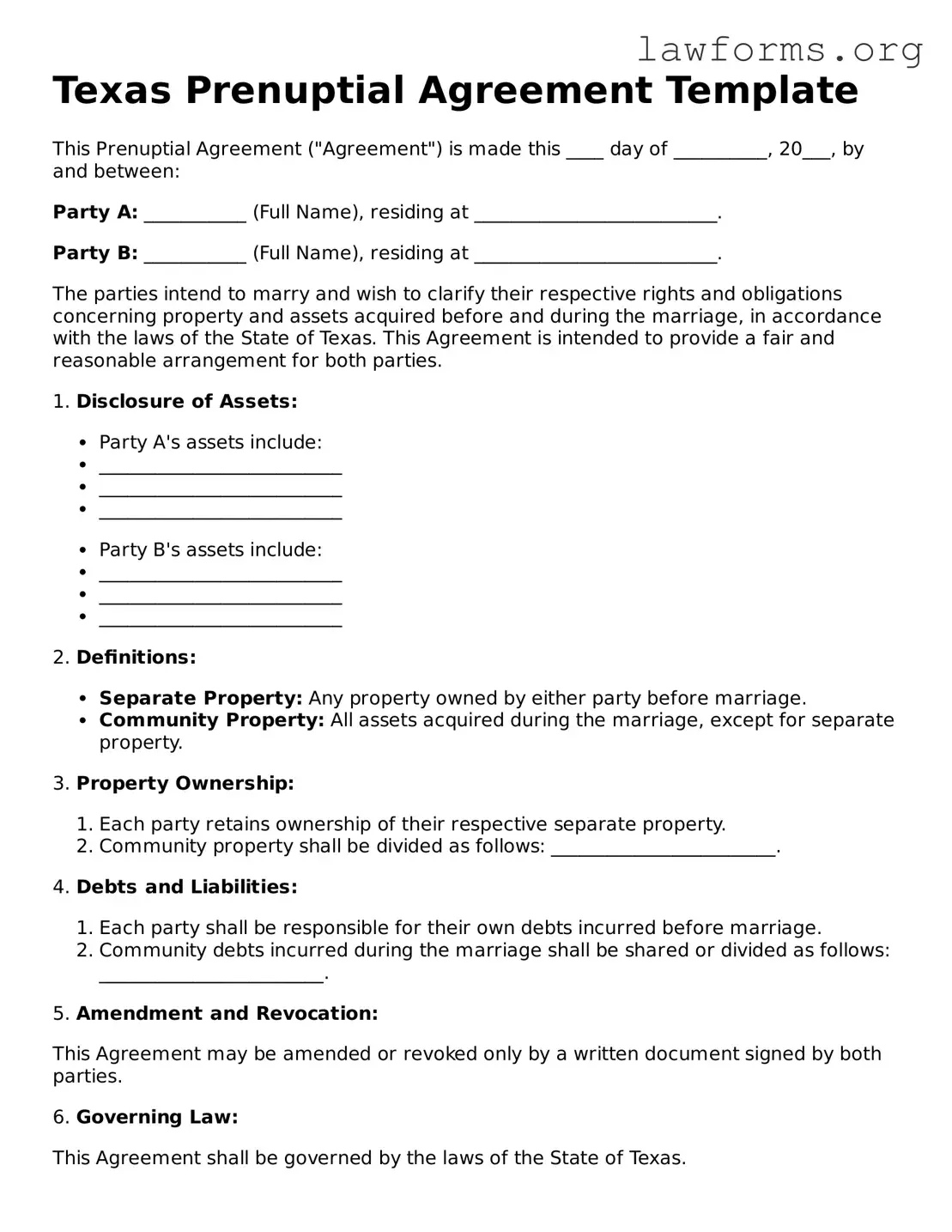Texas Prenuptial Agreement Template
This Prenuptial Agreement ("Agreement") is made this ____ day of __________, 20___, by and between:
Party A: ___________ (Full Name), residing at __________________________.
Party B: ___________ (Full Name), residing at __________________________.
The parties intend to marry and wish to clarify their respective rights and obligations concerning property and assets acquired before and during the marriage, in accordance with the laws of the State of Texas. This Agreement is intended to provide a fair and reasonable arrangement for both parties.
1. Disclosure of Assets:
- Party A's assets include:
- __________________________
- __________________________
- __________________________
- Party B's assets include:
- __________________________
- __________________________
- __________________________
2. Definitions:
- Separate Property: Any property owned by either party before marriage.
- Community Property: All assets acquired during the marriage, except for separate property.
3. Property Ownership:
- Each party retains ownership of their respective separate property.
- Community property shall be divided as follows: ________________________.
4. Debts and Liabilities:
- Each party shall be responsible for their own debts incurred before marriage.
- Community debts incurred during the marriage shall be shared or divided as follows: ________________________.
5. Amendment and Revocation:
This Agreement may be amended or revoked only by a written document signed by both parties.
6. Governing Law:
This Agreement shall be governed by the laws of the State of Texas.
The parties sign this Agreement voluntarily and with full understanding of its terms. Each party acknowledges that they have had the opportunity to consult with independent legal counsel.
_____________________________
Party A Signature
Date: _____________________
_____________________________
Party B Signature
Date: _____________________
